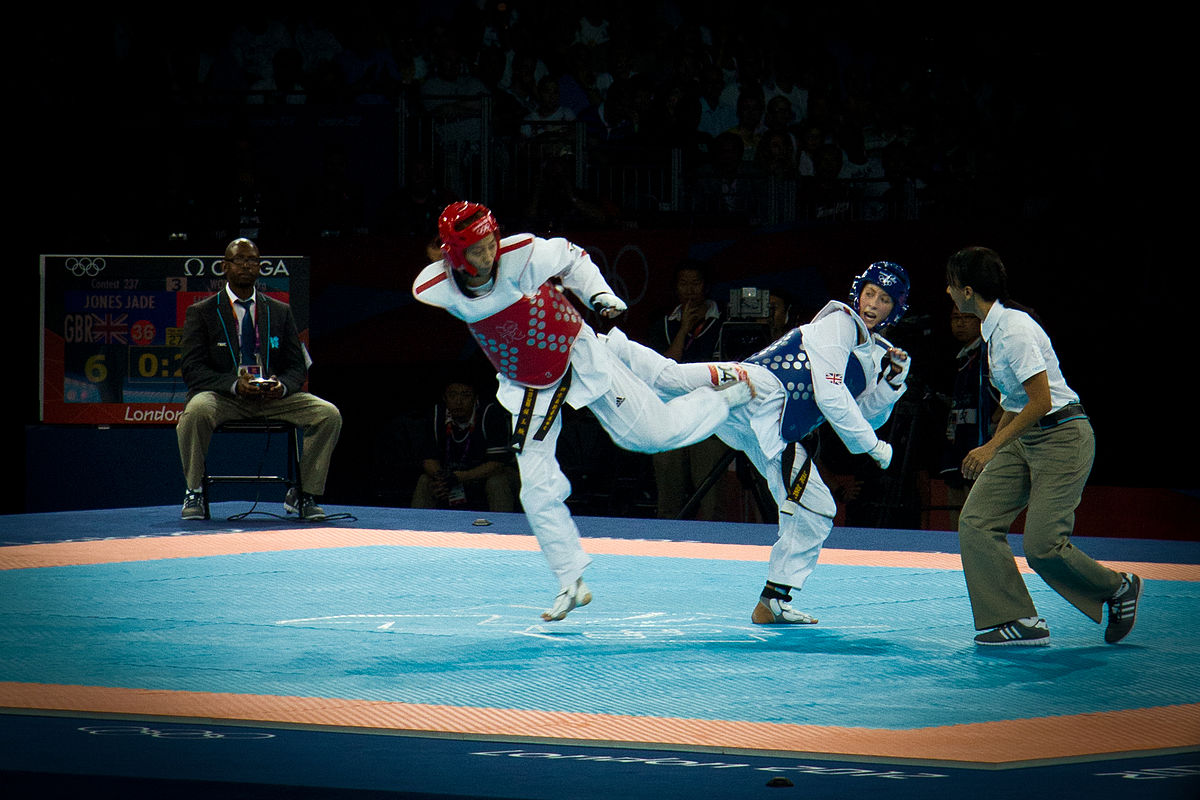Explained: Taekwondo Forms, Rules, And Everything Else

You must have played or at least watched the game of taekwondo? But do you know the various taekwondo forms, rules, and other things? Well, you may be.
However, knowing this game even better will make you enjoy this game even more. In the article, we will decipher all the aspects of this amazing game for you, including the taekwondo forms, equipment, uniforms, and more.
History Of Taekwondo
Taekwondo is an Olympic sport that is a form of Korean martial arts. It was first developed by Choi Hong Hi, a military general and martial artist in Korea’s post-world war II era. In its development, various other martial artists have also contributed.
This sport is a mixture of Subak, Gwaebeop, and Taekkyeaon. Other than these three, you will also see the Chinese kung fu and Japanese karate elements in the taekwondo.
However, with time various taekwondo forms have come into existence around the world. Although as a type of martial arts, various experienced practitioners of this sport can be seen performing numerous jump kicks and astonishing head-height kicks.
Governing Organization
There are numerous governing bodies for taekwondo all around the world, but out of these two are main. The two main governing bodies for the various taekwondo forms are:
- International Taekwondo Federation (ITF)
- World Taekwondo Federation (WTF)
Although the WTF is more popular and the WTF Taekwondo forms are more approved, these two are the main governing bodies. Its forms since 1988 have also been a major part of various Olympic Games.
Taekwondo Forms
There are various forms of this sport popular all around the world. These are:
- Taeguk Series
- Iljag
- Taeguk Ijang
- Samjang
- Taeguk Sajang
- Ojang
- Taeguk Yukjang
- Chiljang
- Paljang
- Koryo
- Kumgang
- Taebaek
- Pyong-won
- Shipping
- Jitae
- Chon-gwon
- Hansu
- Iryo
These are the various WTF taekwondo forms in which students learn to compete in various competitions.
Objective Of Taekwondo
In taekwondo, there are specific scoring zones on a player’s body, and the objective is to land punches and kicks on these areas of the opponent.
The scoring zones in most taekwondo forms are the head and torso. To score a point in the game, these kicks must be powerful as light kicks and punches are not counted. The kicks and punches are counted by judges or electronic systems only if they are powerful. There are three rounds in the match, and the player at the end of these three rounds with the most points is the winner. However, the match can end with a player knocking out the opponent player.
One thing which is essential in all forms of taekwondo is that all players have to uphold the five tenets of the game. These are:
- Courtesy
- Perseverance
- Indomitable spirit
- Integrity
- Self-control
Equipment & Players
In taekwondo sports, a player needs to fight against the opponent of the same-sex. There is no gender equality, as it can lead to injuries. In various taekwondo forms, there are also weight categories to ensure fair play. There are also age categories in the junior competitions of the game.
There is also a taekwondo uniform for the players, which they wear during the matches. This taekwondo uniform which the players wear in the competition is of white color and called a Gi. However, the Gi is a Japanese term for the uniform in martial arts.
A proper term for the taekwondo uniform in Korean is Dobok. There are also taekwondo belts in the game. Taekwondo shoes are also a vital part of the uniform. The taekwondo shoes give the players the ability to be agile and flexible while hitting hard. These taekwondo belts are tied around the middle section of the dress near the waist. The color of the taekwondo belts is to specify the grade of the practitioners.
Various taekwondo belts are:
- White, a belt for beginners.
- Yellow
- Green
- Blue
- Red
- Black.
The black taekwondo belts are given to the most experienced players. Once a player relieves the black belt, they receive ‘dan,’ which are grades. These ‘dan’ on the belt are awarded to the players as they progress further in expertise and experience.
In the matches of all taekwondo forms, players wear various pieces of equipment for protection. These are:
- Head guard
- Groin guard
- Hand protectors
- Mouthguard
- Chest protector
- Forearm protector
- Shinguard
These are some common protective pieces players in the sportswear.
Scoring
The scoring process for the taekwondo is very simple. A player in the game gets the point when:
- A player hits the torso of the opponent through a basic attack.
- Three points when any player scores a head kick successfully.
- A player scores a spinning kick on the torso of an opponent.
The scoring in the taekwondo is according to the points by judges. However, in major competitions of the game, there are electronic scoring systems. These systems are placed inside the chest protectors of each taekwondo player. This is done according to the weight category of the competition.
In the fights where there is no electronic scoring system, a panel of four judges is present. There is a button on the benches of these judges, which they push when they think that a player did a point-scoring hit. For awarding the point, three judges out of the four must agree that the player did a point worthy hit.
Winning In Taekwondo Forms
There are three rounds of two minutes each in a match. When a match ends, the player with the most points is the winner. In cases where the points for both the players are the same, an extra round is played.
This extra round is known as the golden point round. In this round, the player that scores a point first is the winner. A player in the taekwondo match can also be the winner if they knock out the opponent. In cases where a player is disqualified for rule breach, the match ends, and another player is the winner.
Taekwondo Rules
- All the players in a match must be of the same weight category and sex.
- The competition must be held on a mat of 8metre square.
- There are three rounds of two minutes each in a match. In the middle of these rounds, there is a one minute gap.
- Each player in the all taekwondo form scores the points by landing blows on the scoring areas of the opponent.
- The kicks in the taekwondo are allowed on the head and torso, whereas the pouches can only be landed on the body. A player is not allowed to land hits below the waist.
- If a coach or player in the taekwondo match thinks that the judges missed the point, they can protest. In such cases, judges look at a video replay of the game to ascertain the facts and make a decision.
- The match in taekwondo is won when a player knocks out an opponent or has higher points than the opponent.
- If a match ends in a draw, there is a golden round between the players. In this round, whichever player lands a scoring hit is a winner.
- There are also penalties in the match, which can lead to loss of points. These penalties are:
- Punching to the opponent’s face
- Attacking the opponent below the waist.
- Turning back towards the opponent
- Feigning injuries.
- Attacking the opponent using the knee
- Stepping with both your feet out of the ring.
- Grabbing, pushing, or holding the opponent player
These are some of the taekwondo rules which are applicable to all the taekwondo forms.
Final Words
Taekwondo is a popular Olympic game played around the world. This game has been derived from various other martial art sports like karate.
There are also various taekwondo forms that are played around the world and equally popular.






